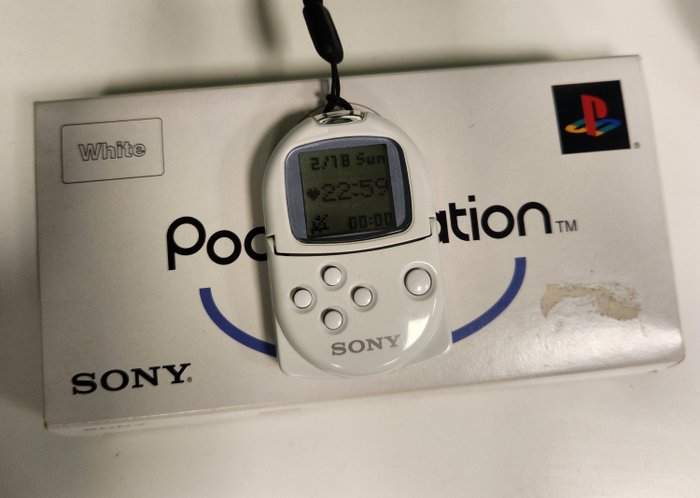
2016 Chateau Patache d 'Aux - Bordeaux - 6 Flaschen (0,75 l)
Nr. 81873943

Nr. 81873943

The PocketStation is a memory card peripheral by Sony Interactive Entertainment for the PlayStation home video game console.[3] It was released in Japan in 1999. The device acted not only as a memory card, but was interactive itself via a small monochrome LCD display and buttons on its case. Many PlayStation games included software that could be downloaded and played on the PocketStation. A release in Europe and North America was planned, but was ultimately canceled. The PocketStation shares similarities with Sega's VMU for the Dreamcast.
History
The PocketStation was released exclusively in Japan on January 23, 1999. The original Japanese ship date for the PocketStation was set for December 23, 1998, but it was delayed a full month. Sony only shipped an initial 60,000 units of the peripheral when it was released. It was initially available in two case colors: white and clear.
It proved extremely popular, selling out all over the region. Sony planned to release the PocketStation outside Japan, engaging in promotional activity in Europe and North America, but the release did not occur. SCEA cited an inability to meet Japanese demand as the reason for the PocketStation's absence. Despite this, a few games, such as Final Fantasy VIII and SaGa Frontier 2, retained PocketStation functionality in their localized versions.
On November 5, 2013, it was announced that the PocketStation would be revived as an application for the PlayStation Vita, allowing users to play PocketStation format minigames for any classic PlayStation games that they own. Originally only available to PlayStation Plus members, it was later released to the general public. It remains an exclusive to the Japanese PlayStation Vita.
Hardware
Categorized by Sony as a combination of a Memory Card and a miniature personal digital assistant, the device features a monochrome liquid crystal display (LCD), infrared communication capability, a real-time clock, built-in flash memory, and sound capability. To use the device's memory card functionality, it must be connected to a PlayStation through a memory card slot.
Technical specifications
CPU: ARM7T (32-bit RISC chip variable clock, max 7.995MHz)
Memory: 2K bytes SRAM, 128K bytes Flash RAM (via the PlayStation memory card)
Screen: 32×32 dot monochrome LCD
Sound: 1 miniature speaker (10-bit PCM)
Switches: 5 input buttons, 1 reset button
Infrared communication: Bi-directional (supports IrDA based and conventional remote control systems)
LED indicator: 1 (red)
Battery: 1 CR-2032 lithium battery
Other functions: calendar function, memory card and identification number.
Dimensions: 64 × 42 × 13.5 mm (height × width × depth)
Weight: Approximately 30g (including battery)
So kaufen Sie auf Catawiki
1. Etwas Besonderes entdecken
2. Höchstgebot abgeben
3. Sichere Zahlung durchführen